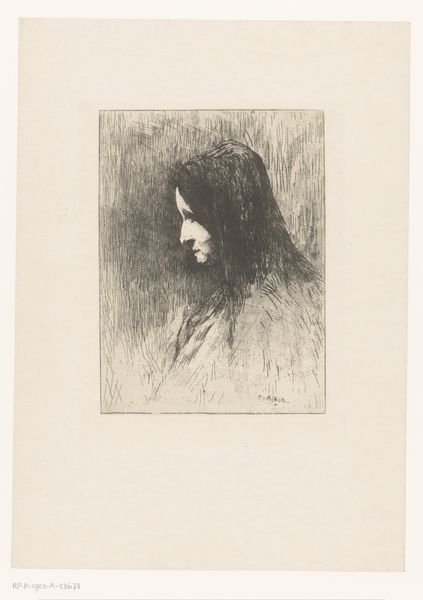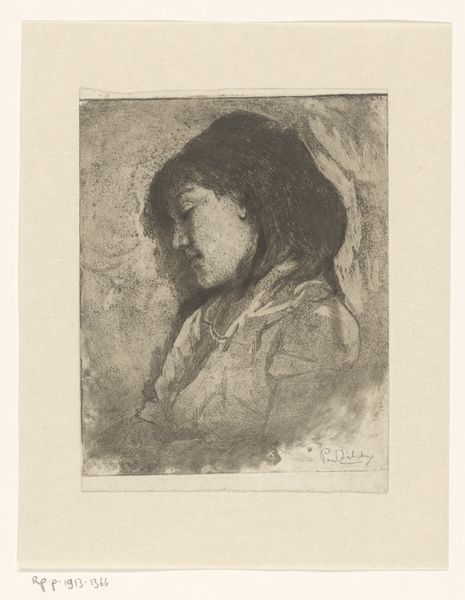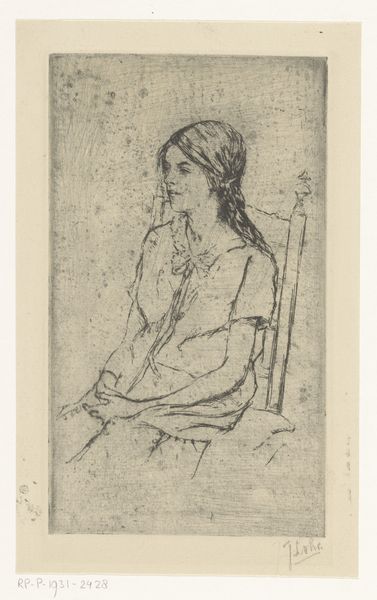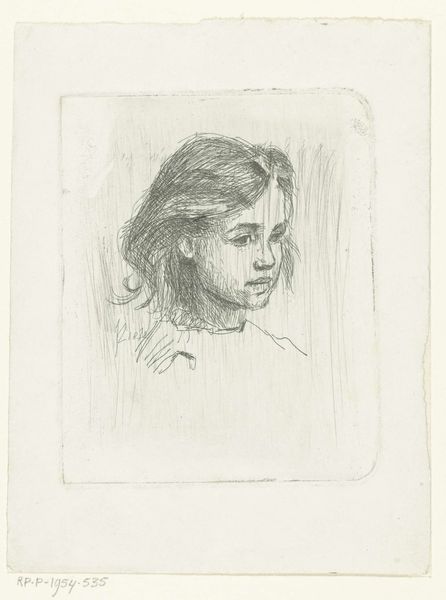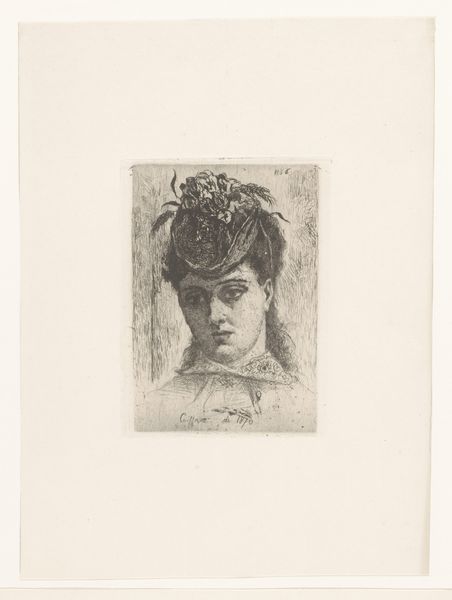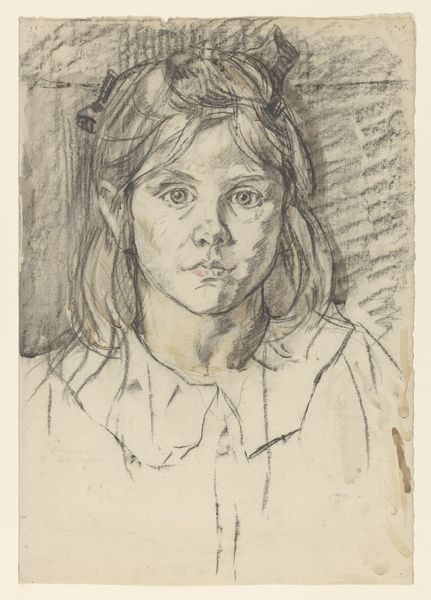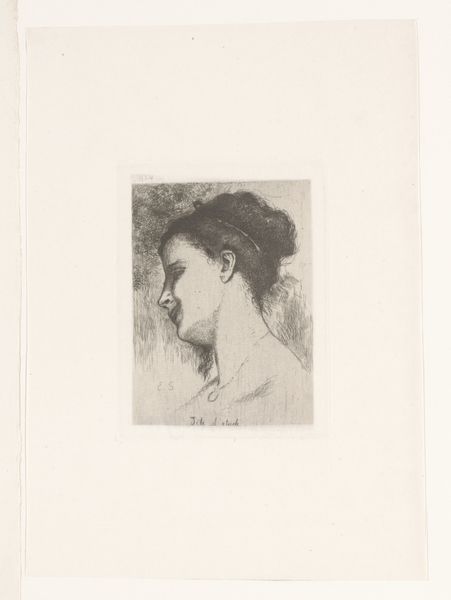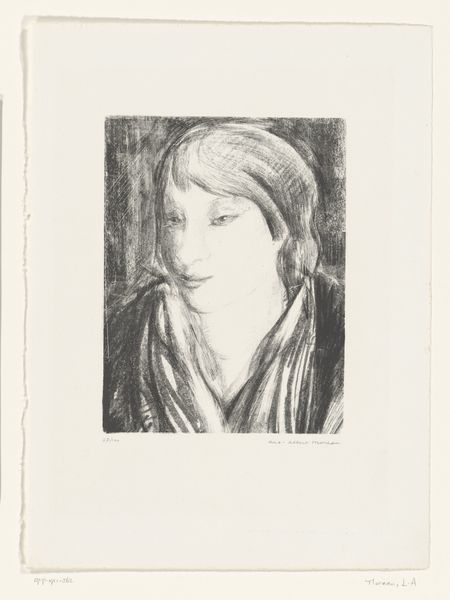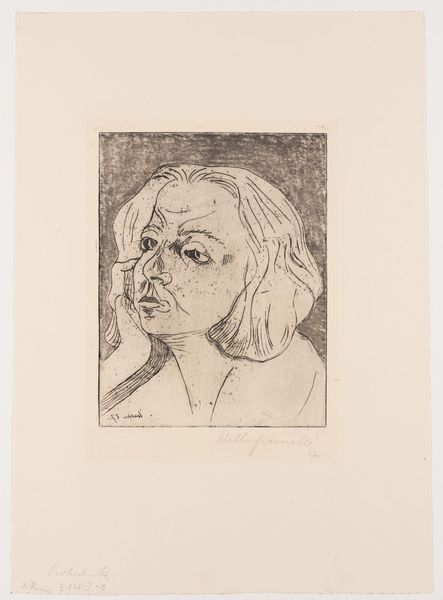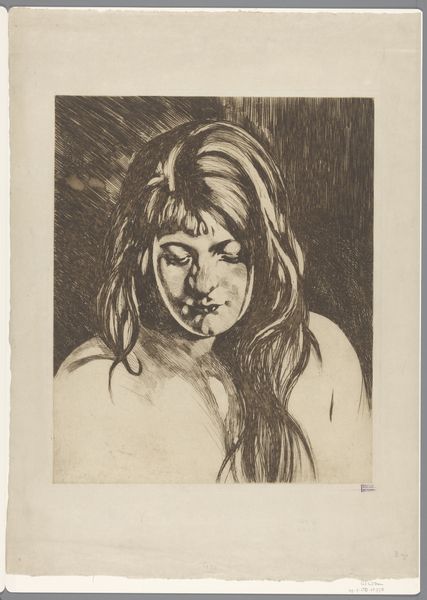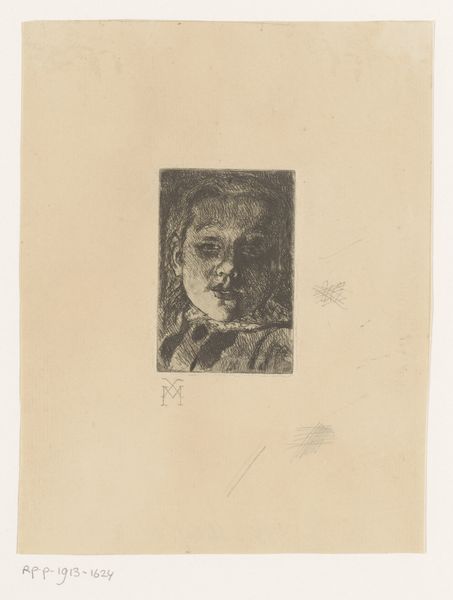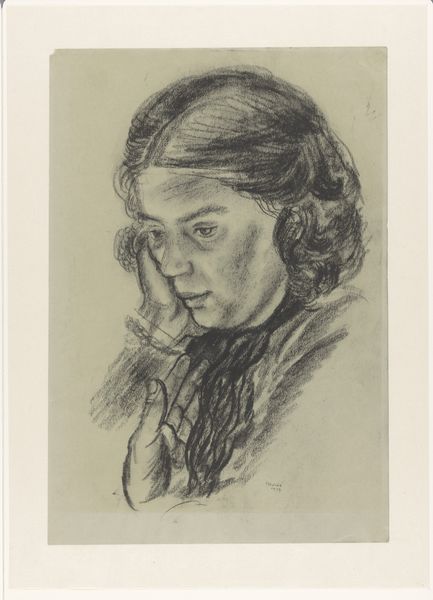
drawing, print, etching
#
portrait
#
pencil drawn
#
drawing
# print
#
etching
#
old engraving style
#
caricature
#
figuration
#
pencil drawing
Dimensions: height 257 mm, width 193 mm
Copyright: Rijks Museum: Open Domain
Curator: This is a work by Willem Witsen, entitled *Portret van Augusta Maria Agnes (Marie) Witsen-Schorr*, estimated to have been created between 1910 and 1944. It's currently held here at the Rijksmuseum. Editor: I’m immediately struck by the softness of it. There’s an almost ephemeral quality to the shading that makes the subject seem both present and dreamlike. Curator: It's an etching. Witsen used delicate lines to capture the likeness of his subject. Notice how he uses the medium to create a sense of depth. It reflects a broader trend of portraiture from the early twentieth century when printmaking gained popularity for intimate portraiture. Editor: Intimate is right. But looking at her… there's something ambiguous in her expression. Is that a slight smile? Or a thoughtful reservation? The ambiguity is interesting and provocative; this piece invites a more nuanced reading than a simple rendering of an individual. Curator: These etchings were quite popular with the burgeoning middle class. Reproducible art that could emulate the techniques used by fine artists like, say, Singer Sargent, but at a lower cost. They played a role in democratizing portraiture and visual culture, as a rising urban demographic wanted a piece of the art world in their parlors. Editor: Right, it brings up all kinds of questions about access, about representation… who gets seen, who gets remembered? I mean, we have her image, but what do we really know about Augusta Maria Agnes Witsen-Schorr? Curator: Well, such questions bring forth critical conversations about the limitations inherent in even a democratized version of art culture. In museums like this, pieces such as these can offer access points to discussing these complicated legacies. Editor: True, it's important to remember that access is always mediated, never neutral. It makes me wonder about the societal factors present that may have encouraged him to complete it in the style he chose and the relationship between sitter and artist that ultimately shaped the work's visual outcome. Curator: Indeed, so many things to reflect on when analyzing how even seemingly benign works intersect within our broader socio-cultural context. Editor: Agreed. I love how this artwork provides this great glimpse of one woman while also offering an expansive reflection on identity, portraiture and culture at large.
Comments
No comments
Be the first to comment and join the conversation on the ultimate creative platform.
